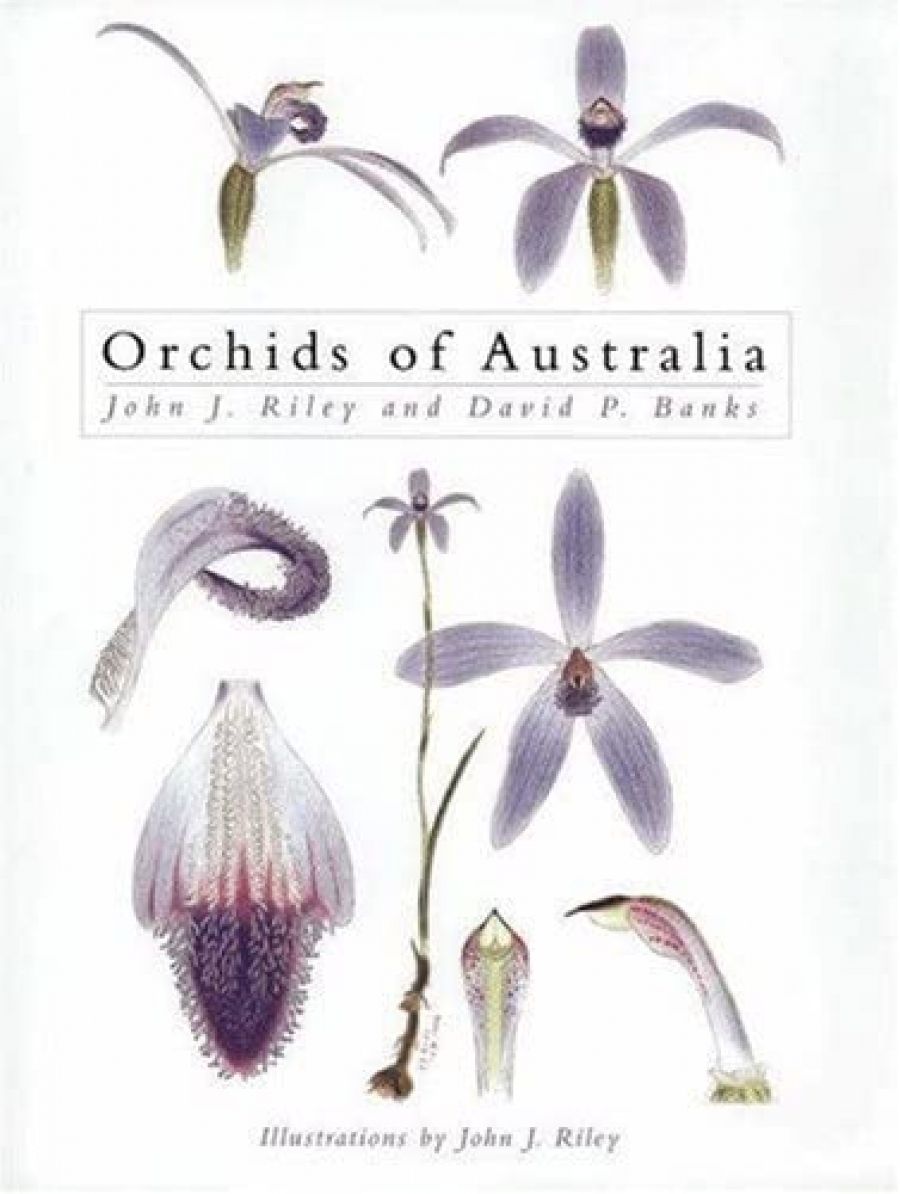
- Free Article: No
- Contents Category: Non-fiction
- Review Article: Yes
- Article Title: Orchid Business
- Online Only: No
- Custom Highlight Text:
This beautiful book showcases the botanical orchid illustrations of John Riley, a retired shearer whom some regard as Australia’s finest living botanical illustrator. Riley started drawing Australian orchids in the 1970s, and this volume includes subjects that date back to 1992. It lists 150 works. Those who take book titles literally will assume that this volume contains illustrations of all our native orchids. This is not the case. We have a rich flora of about 1,200 species. This, therefore, is the first in a planned series intended to describe and illustrate all our orchidaceous flora.
- Book 1 Title: Orchids of Australia
- Book 1 Biblio: UNSW Press, $120 hb, 322 pp
Botanical illustration is one of the few scientific disciplines where there has been little change in style and approach over the last 250 years. This allows detailed comparison between contemporary illustrations of Australian genera with work rendered two centuries ago. The first and probably greatest illustrator of Australian plants was Ferdinand Bauer (1758–1840). Bauer, an Austrian, was the natural history artist on Matthew Flinders’s journey of discovery to Australia on the Investigator (1801–3). As well as his zoological drawings, Bauer documented plants and produced at least sixteen native orchid works. One plant painted by Bauer is the brittle midge orchid (Genoplesium baueri). Interestingly, this orchid named in honour of Bauer is also illustrated by Riley in his book.
Despite the exquisite detail in his drawings, Bauer only scratched the surface of Australian native orchids. The first attempt to illustrate all our native orchids was undertaken by Robert D. Fitzgerald, who was born in Tralee in Ireland and emigrated to Sydney in 1846. He worked for most of his adult life as a surveyor for the NSW Lands Department, eventually becoming its Deputy Surveyor-General in 1873. In that role, he was able to travel all over the state and indulge his passion for illustrating and studying orchids with the approval of the colonial government. Fitzgerald was attracted to orchids by Charles Darwin’s work; his own magnum opus, Australian Orchids, was later dedicated to Darwin’s memory. Darwin, the author of The Various Contrivances by which Orchids Are Fertilised by Insects, was in regular contact with Fitzgerald and received some of the early editions of Australian Orchids.
Fitzgerald’s Australian Orchids was published in parts from 1875 until three years after his death in 1895. With 204 illustrations, this was the largest collection of orchids ever painted, and it was one of the finest books published in Australia in the Victorian era. Fitzgerald was a wonderful illustrator, and his work justly received international praise and recognition. But, despite the acclaim, his published illustrations fell short of all the identified species known at the time. William Henry Nicholls (1885–1951) was the next to attempt to illustrate all our orchids. A bookbinder by trade, Nicholls was forced to abandon his profession during the Depression, and later became a plant propagator in a Melbourne municipal park. In the 1920s he decided to illustrate all the known native orchid species. After twenty-five years, he had illustrated approximately 400 plates. Part One of his great work, Orchids of Australia, was published only a few days after his death.
Alongside each of the Riley illustrations is a ‘field guide style’ supporting text on each illustrated species. The species notes include distribution details, flowering times, and habitat information. Unlike the Fitzgerald and Nicholls books, there is an interesting entry on conservation status. The book would have benefited had this entry been more detailed. David P. Banks, a highly respected orchid buff, who, like Riley, comes from a non-scientific background, provides the text. As editor of both The Orchadian (a native orchid journal) and the long-running Australian Orchid Review, Banks has a wonderful knowledge of all sides of the orchid business. Both Fitzgerald and Nicholls wrote their own accompanying texts; Nicholls’s style, I believe, is the most readable of the three.
I hope that Riley fulfils his goal of painting all Australia’s orchids species, but I suspect he too will fail. Even if he gets them all down on paper, I wonder whether the publisher will support another half-dozen volumes of the same production quality and retail price. I think that only a co-operative artistic effort by several illustrators, alive and dead, will see a complete illustrated flora of Australian native orchids.
Whatever happens with Riley’s legacy, the quality of this work will surely enhance his reputation with students of botanical illustration outside the specialist area of native orchid fanciers.


Comments powered by CComment